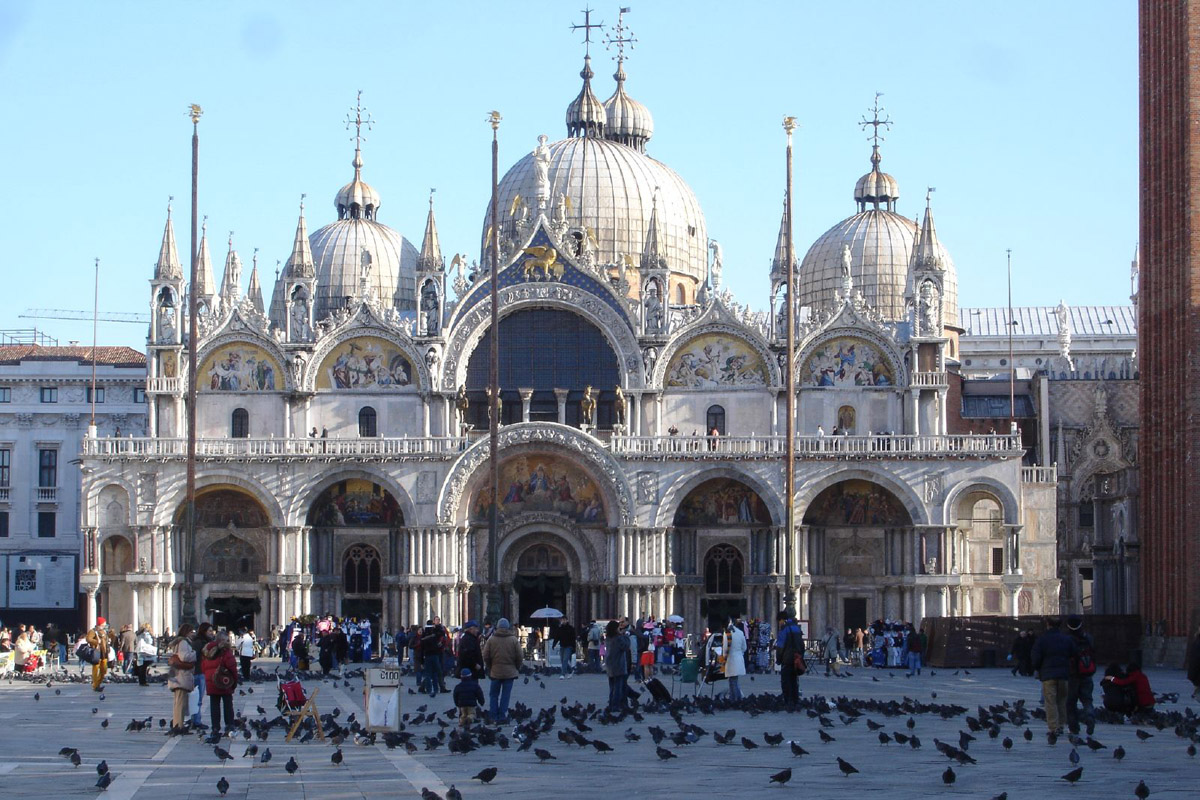
St. Mark’s in Venice (begun in 832 and burned in a rebellion in 976, was rebuilt in 978 and completed in 1647) is full of treasures taken from Constantinople in 1204 by the Fourth Crusade.
St. Mark’s Eve is the day before the feast day of St. Mark the Evangelist. His feast is observed on April 25 of each year; thus St. Mark’s Eve is April 24.
On St. Mark’s Eve it was the custom in the villages of England, from the 17th century to the late 19th century, to sit in the church porch between the hours of 11.00 p.m. and 1.00 a.m. for three successive years. On the third such sitting, it was said that the ghosts of those to die during the coming year would be witnessed passing into the church. This practice took place throughout England, but was most prevalent in northern and western counties. Some accounts of the custom state that the watchers must be fasting, or must circle the church before taking up position. The ghosts of those who were to die soon would be the first observed, while those who would almost see out the year would not be witnessed until almost 1.00 a.m. Other variations of the superstition say that the watchers would see headless or rotting corpses, or coffins approaching.
Another, one might say opposite, tradition holds that a young woman can see the face of her future husband appear on her smock by holding it before the fire on St Mark’s Eve.
